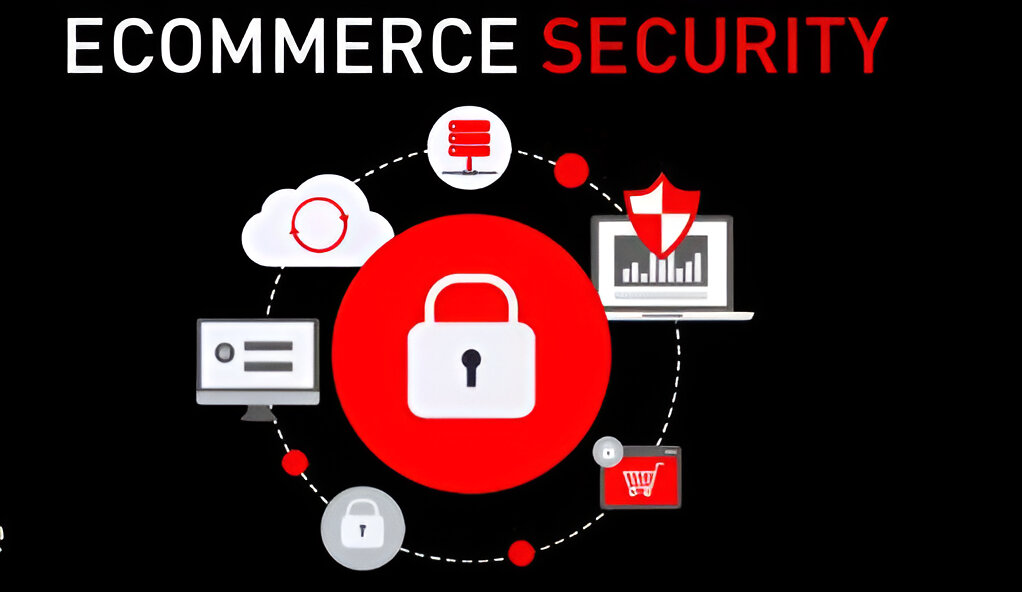From Clicks to Customers: Leveraging IT for E-Commerce Success - NS GLOBAL CORPORATION

E-commerce has emerged as the most important constituent of business strategy in today’s digital arena. With thousands of options on clients’ fingertips, the challenge is no longer in attracting clicks but in converting clicks into loyal customers. Proper harnessing of IT can make all the difference in this regard. Let’s explore how businesses can achieve their e-commerce success by harnessing IT.
Understanding the E-commerce landscape The e-commerce market is booming, with more consumers opting for online shopping due to its convenience and variety. However, competition is fierce, and merely having an online presence is not enough. Businesses must create a seamless and engaging shopping experience that meets customer expectations and encourages repeat purchases.
Optimizing Your Website for User Experience

E-commerce is an integral part of business strategy today in the digital age. While options abound, the point isn’t merely attracting clicks but converting those clicks into happy customers. Proper application of information technology can make all the difference. Let’s walk through how businesses can successfully exploit IT to drive e-commerce.
A user-friendly website is essential for e-commerce success, directly impacting customer satisfaction and retention. Responsive design is key; it ensures your site looks great and functions seamlessly on all devices, from desktops to smartphones. With more consumers shopping on mobile, a responsive layout is crucial for reaching a wider audience.
Another critical dimension is speedy load time. Using IT-based solutions such as CDNs or image optimization reduces the time taken for loading the website. Bouncing visitors form a huge percentage of slow sites, so speed improves usability and keeps the visitor longer on the website.
Lastly, intuitive navigation is vital for guiding customers. Clear menus and effective search functionalities make it easy for users to find what they need. A well-structured site not only boosts user satisfaction but also increases conversions. By focusing on responsive design, fast loading times, and intuitive navigation, you can greatly enhance the user experience and drive e-commerce success
Data analytics for informed decision making:

Data is one of the most powerful assets in e-commerce, and leveraging IT for data analytics can offer valuable insights into customer behaviour and preferences. One key approach is customer segmentation. By using analytics tools to categorize your audience based on demographics and shopping habits, you can develop targeted marketing strategies that resonate with specific groups, increasing engagement and conversion rates.
Another crucial aspect is analysing sales trends. By examining historical sales data, you can identify patterns and forecast future demand, which helps optimize inventory management and promotional planning. This proactive approach ensures you’re well-prepared to meet customer needs without overstocking. Lastly, A/B testing allows you to test different versions of product pages, marketing emails, and ads to see which performs better. This data-driven methodology enables you to refine your strategies based on real user feedback, which enhances overall effectiveness. By embracing data analytics, you make informed decisions that drive e-commerce success.
Personalization to Enhance Customer Experience :

Personalization is crucial for turning clicks into customers, and leveraging IT can help you create tailored experiences that resonate with your audience. One effective strategy is implementing recommendation engines. By using algorithms to analyse previous purchases and browsing behaviour, you can suggest relevant products, encouraging customers to explore more and increasing the likelihood of conversion.
Another powerful tool is dynamic content, which allows you to customize website elements and marketing messages based on individual user behaviour and preferences. This creates a more engaging experience, making visitors feel valued and understood, which can significantly enhance customer satisfaction.
Additionally, establishing loyalty programs through IT systems can help manage rewards for repeat purchases, fostering long-term relationships with your customers. By recognizing and rewarding loyalty, you not only boost retention but also encourage customers to return for future purchases. Through these personalized strategies, you can enhance the overall customer experience and drive e-commerce success.
Customer Support and Engagement

Providing exceptional customer support is essential for transforming a one-time shopper into a loyal customer, and IT can significantly enhance this engagement. One effective tool is chatbots and AI. By implementing chatbots on your website, you can provide instant responses to customer inquiries, ensuring support is available 24/7. This not only improves user satisfaction but also frees up human agents to handle more complex issues.
Integrating social media into your customer support strategy is another key approach. Using IT tools to monitor social media channels allows you to engage with customers in real time, addressing their concerns and questions promptly. This proactive communication fosters a sense of community and trust between your brand and its customers.
Lastly, establishing feedback systems such as surveys and review prompts enables you to gather valuable customer insights. By actively seeking feedback, you demonstrate that you value customer opinions and are committed to improving their experience. This ongoing dialogue not only enhances engagement but also helps you identify areas for improvement, ultimately driving customer loyalty and satisfaction.
Security and Trust:

Building trust is essential for online success, and ensuring your customers feel safe while shopping is paramount. One critical step is to invest in SSL certificates. By securing your website with HTTPS, you protect customer data during transactions, which helps safeguard sensitive information and reassures customers that their privacy is a priority.
Additionally, compliance with regulations such as GDPR is crucial for responsible data handling. Adhering to these data protection laws not only helps you avoid legal repercussions but also fosters trust among customers, as they know their information is being treated with care and respect.
Finally, maintaining transparent policies is vital for instilling confidence in your customers. Clearly communicating your shipping, return, and privacy policies allows customers to understand their rights and the procedures involved in their transactions. This openness not only enhances customer trust but also improves overall satisfaction, making them more likely to return for future purchases. By prioritizing security and transparency, you can create a safe shopping environment that encourages loyalty and growth.
Conclusion :

In the fast-paced world of e-commerce, turning clicks into loyal customers requires a thoughtful strategy that harnesses the power of technology. By optimizing the user experience, businesses can create websites that are easy to navigate and enjoyable to use. Leveraging data analytics helps them understand customer behaviour, allowing for smarter decisions that cater to shoppers’ preferences. Personalizing interactions—like recommending products based on past purchases—makes customers feel valued and understood.
Providing seamless payment options and robust customer support further enhances the shopping experience, ensuring that every step feels smooth and secure. Plus, prioritizing security builds trust, which is essential in encouraging customers to shop confidently. As technology continues to advance, staying ahead of trends and adopting innovative solutions will be vital for long-term success in e-commerce. By focusing on the entire customer journey and using the right tools, businesses can transform casual visitors into devoted fans, driving growth and profitability in the digital marketplace.
Leave A Comment